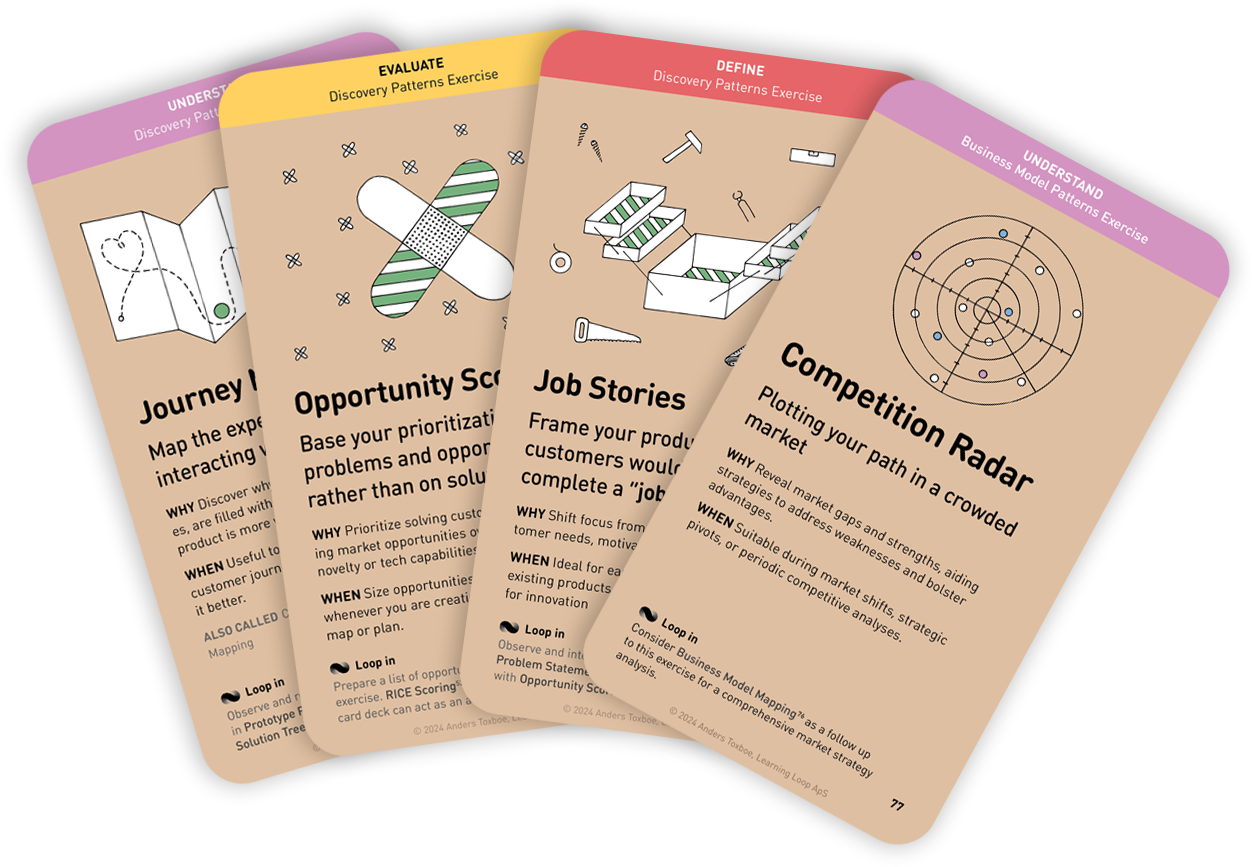Workshop Exercises: Understand
Drag & Drive Mapping
Identify what supports or blocks goal achievement

Why: Pinpoint steps with user obstacles and spots to boost motivation and engagement
When: Run before engaging in intervention or conversion optimization efforts
This exercise is designed to help designers and teams identify factors that either propel or hinder progress towards achieving goals in a user journey or conversion funnel – both from a business and user perspective.
The primary purpose of Drag & Drive Mapping is to create a visual representation of the positive and negative forces at each step of a user journey or conversion funnel. By categorizing these forces into ‘Drags’ (barriers) and ‘Drives’ (enablers), designers can gain a comprehensive understanding of what works well and what doesn’t.
The exercise helps pinpoint specific stages in the journey or funnel where users encounter obstacles or where there are opportunities to enhance motivation and engagement.
By examining both positive and negative factors, the exercise provides a balanced view, acknowledging what already works well and can be built upon alongside what is known to need improvement.
Instructions for running this play
- Define journey steps
Begin by outlining the steps of the user journey or conversion funnel on the whiteboard. Label each step horizontally across the top using separate sticky notes for each step. - Introduce Drags and Drivers
Explain the two categories: “What is moving us forward” (Drivers) and “What is holding us back” (Drags). Assign a color for each category. - List Drags and Drivers
Give participants sticky notes in both colors. Ask them to write down factors that act as drives and drags for each step of the journey/funnel in a 5 minute Silent Storm. One factor per sticky note. - Present
Participants come up and place their sticky notes under the appropriate step in the journey/funnel. Drivers on one side (e.g., left) and Drags on the other side (e.g., right). Encourage a brief discussion as participants place their notes, allowing for clarification and understanding of each point. - Code each sticky note behaviorally (optional)
Use the Persuasive Patterns card deck to explain the user pains or motivations identified with insights from psychology. This will help generate better behaviorally informed ideas in followup exercises. - Vote on challenges
Let participants Dot Vote on the Drag factors they feel are the biggest challenges and the Drivers that have the biggest potential. Once voting is complete, reorder the sticky notes vertically. The notes with the most votes (biggest impact) should be at the top, organizing them by priority. - Reflect on the results
Lead a discussion to analyze the results. Focus on the top-voted Drags to understand why they are perceived as major challenges and discuss potential ways to address them. Reorder if needed.
A collection of workshop exercises that will help you ditch dull meetings and facilitate with confidence. It will help you master the design process and have more productive time with your team. The card deck will be ready for purchase in the end of 2026 and is now undergoing rigorous testing.
Reserve your deck!Related plays
- Growth Design Workshop (Hacking Growth + Design Sprint) by Jonathan Courtney

